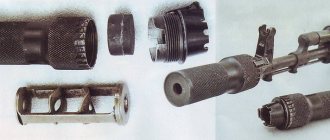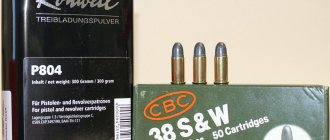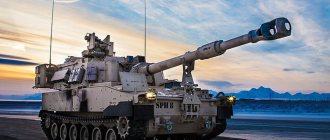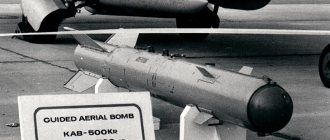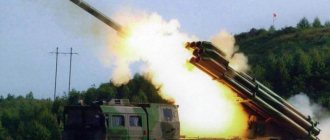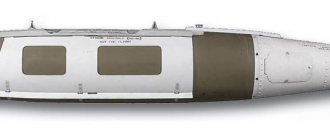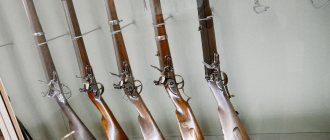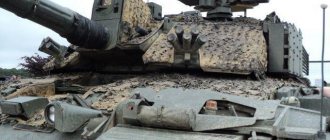Next generation artillery ammunition
Traditionally, artillery has been the most important fire support component in combined arms operations. Artillery performs the classic tasks of dispersing enemy forces, containing the enemy or covering one’s own troops if necessary, and supports combat units on the battlefield at night by illuminating a given area.
The ability of artillery to perform these tasks must be ensured in the future. Consequently, the production of traditional large-caliber ammunition for barrel weapons will continue, while further development of artillery ammunition will continue in order to increase their range and enhance the impact on targets.
The Iraq War, for example, has raised the question of whether artillery will be deployed in changed and new scenarios, as in many cases the traditional battlefield has given way to asymmetrical/urban warfare. Armed forces are often left without cover when the enemy operates from prepared positions at close range. Troops often cannot advance without the superior firepower provided by an effective artillery component. In addition, civilians and members of humanitarian organizations are often present in combat areas. Consequently, traditional artillery ammunition is generally too inaccurate for use in peacekeeping operations; there is a high risk of indirect losses, which can be minimized by new, specially designed, more accurate ammunition.
Neutralization of selected single targets with a high probability of hitting the target with the first shot was not originally part of the operational function of cannon artillery. Since it was a traditional weapon for firing over areas, the accuracy of an artillery shell was rather a secondary criterion. The projectiles must hit the approximate center of the target area within a certain tolerance. However, the circular probable error (CPE) also increases in arithmetic progression with increasing distance. Thus, as the distance to the target increases, the dispersion increases both in length and width. To compensate for this effect, more ammunition is needed to effectively hit the target. Since all of this must be viewed from a critical perspective, solutions to improve accuracy must be examined and implemented not only from a logistics perspective, but also in light of the aforementioned changing requirements.
The increased accuracy of the newly developed projectiles allows the soldier to hit the target with fewer of them. Given the reduced ammunition consumption (as a result of increased accuracy), the threat to non-combatant civilians is reduced. Carrying out work to standardize ammunition also improves logistics practices.
However, modern artillery ammunition must effectively hit the target. In this regard, it is expected that proven as well as new principles of influencing targets will be applied. In addition, the development of artillery munitions will be influenced by international agreements, such as the Convention on Cluster Munitions, which came into force in August 2010.
Ultimately, safety considerations for storing and transporting artillery ammunition must also be taken into account.
Increased range
Range has always been an indicator of the quality of artillery systems and still plays an important role in the evaluation and comparison of systems. Consequently, various possibilities to increase range are currently being explored. From a technical point of view, the range of a system is influenced by the type of weapon, the propellant charge and the ballistic characteristics of the corresponding projectile.
Today, the quality of artillery barrels has been improved, allowing the use of propellant charges with greater energy and thus creating greater pressure. Modern artillery charges no longer have anything in common with the gunpowder originally used. Due to the introduction of explosives and improved geometric combustion parameters, modern propellant charges are significantly more explosive and energetically more efficient.
In addition, the length of artillery barrels increased; obsolete howitzers have a barrel length of up to approximately 39 - 42 calibers, while modern barrels have a length of up to 52 calibers. Since modern barrels are longer, the energy of the propellant charge can be used more efficiently. Currently used solid charges have little room for performance enhancement. Therefore, R&D is also focusing on liquid and gaseous propellants that are injected into the gun's combustion chamber, similar to the fuel in an internal combustion engine, as the projectile moves through the barrel. Other manufacturers are evaluating the possibility of creating guns in which the projectile is driven by electromagnetic pulses.
Technical changes to artillery shells also provided increased range. The ballistic characteristics of a projectile depend on its shape. Thus, the original cannonball developed into a cylindrical-ogive projectile. Compared to modern projectile models, older models appear round and blunt-nosed, while newer models have a more elongated, pointed shape. For example, the rod-shaped or torpedo-shaped shape of new projectiles can help reduce aerodynamic drag, thereby increasing range.
Additional changes can be found in the rear of the projectile. The cylindrical part of obsolete projectiles often ended in a "stub" (blunted shape), increasing turbulence and bottom drag, which slowed the projectile in flight. Therefore, so-called bottom gas generator projectiles were developed to reduce the impact of bottom drag.
The working gases of the pyrotechnic system in the rear flow inward and thereby compensate for the negative pressure area directly behind the projectile.
In addition to the bottom gas generator, rocket-powered projectiles were developed. The propellant charges were built into the rear of the warhead, giving the projectile additional acceleration during its trajectory.
The above technical improvements have provided a significant increase in the firing range of traditional artillery weapons (for example, from the original 20 km to 52 km in the case of a 155 mm self-propelled howitzer). However, the actual increase in range due to the use of a bottom gas generator and auxiliary jet engines should be studied very seriously, since this negatively affected the maximum weight of the projectile warhead. In this regard, and especially with newer types of ammunition, parts of projectile bodies that were originally made of steel are now made of lighter materials, such as fiberglass-reinforced plastics. Current maximum ranges are more than 52 km. These ranges can be achieved using the so-called long-range artillery rocket projectile with increased initial velocity V-LAP (Velocity-enhanced Long-range Artillery Projectiles). These projectiles have reduced frictional resistance while moving in the barrel, since they slide along the rifling and corresponding surfaces due to the centering belt and guides attached to the projectile, in addition, they are equipped with bottom gas generators and auxiliary rocket engines.
An increase in range can also be achieved through the so-called pitching of the projectile during its flight. To achieve this, the center of gravity of the projectile is adjusted so that the nose is proportionally “higher” than the rear. Consequently, the projectile seems to glide in the air, which “props” it from below.
Accuracy
Range characteristics have always been the basis for thinking about how to hit selected point targets with artillery. Traditionally, artillery shells are stabilized by rotation. This was enough to guarantee the required accuracy for traditional artillery missions, but not enough to hit point targets. One solution to improve accuracy is the use of laser-guided projectiles. Another direction is the use of satellite navigation.
In December 2008, the French Defense Acquisition Agency published an initial research program for a temporary group of companies consisting of Nexter Munitions and TDA (a division of Thales) to design and manufacture a prototype precision-guided artillery projectile. The goal of this program is to purchase low-cost technology modules for navigation, piloting, targeting, acquisition and target acquisition (semi-active laser sensor), which can be integrated into several types of ammunition (120 mm mortar, tank, 155 mm artillery, GMLRS rockets (MLRS) ) and 68 mm helicopter missiles).
Today, bunkers, caves in remote mountainous areas, single buildings in built-up areas or armored vehicles can be destroyed by laser-guided munitions. The first artillery shell to use this physical principle was the 155-mm COPPERHEAD developed by the Americans. However, this type of artillery ammunition was not developed in the West. Russia has used this technology since the early 1980s and has developed laser-guided artillery and mortar munitions of various calibers. These include Kitolov and Centimeter shells for 122 mm and 152 mm barrel artillery, 120 mm Gran and 240 mm Smelchak shells for mortars. In Ukraine, the Central Design Bureau "Tochnost" created the 152-mm Kvitnik projectile. However, the Russian Krasnopol is the most famous artillery shell, meeting the national needs for a 152 mm shell and manufactured for export in the NATO standard 155 mm caliber. In addition to the Russian models manufactured by the Federal State Unitary Enterprise Research Institute Polyus, Western systems, for example DHY307, developed by the French company CILAS, can be used as laser target designators. Buyers include, for example, India and France. A copy of the Russian solution is produced in China under the designation HONG DU TI.
Krasnopol systems are designed to destroy tanks, infantry fighting vehicles, artillery pieces, moving or stationary, in open spaces or dug-in, as well as dugouts, bridges, ferry crossings and surface targets. The system consists of a guided artillery projectile and a laser target designator.
The procedure for performing a fire mission using the Krasnopol system
The forward observer detects the target and determines its coordinates. Together with the frequency of the laser target designator, these coordinates are transmitted to the fire control computer via a radio channel. At the firing position, the electronics of the artillery system receive the necessary data. Next, the gun is loaded and fired. While the projectile is flying along its trajectory towards the target, the forward observer receives a request to mark the target. The projectile detection sensor is activated, receives the laser beam reflected from the target and directs the projectile to the marked target.
This solution provides a 90% hit probability at a firing range of up to 24 km. Even moving targets whose speed is up to 36 km/h can be successfully hit. According to statistics, ten Krasnopol shells are needed to destroy an equipped and fortified platoon location consisting of two tanks, four infantry fighting vehicles, three ATGM launchers and five underground dugouts connected by trenches. And to successfully destroy the same object with conventional high-explosive ammunition may require several hundred rounds.
Despite the new capabilities for destroying point targets, this type of ammunition has a number of disadvantages. The electronics, sensor systems, and mechanical components of modern laser-guided ammunition can withstand high overloads to a limited extent during firing. Thus, this type of ammunition currently cannot fully utilize the maximum ranges achievable by other parameters. An additional disadvantage is the need for a forward observer, who can be easily detected by modern reconnaissance means (not only due to the active laser) and ultimately destroyed. In addition, the ammunition requires a certain distance and time to capture the reflected laser beam and change its flight path to the target. Poor weather conditions, such as fog or low clouds, limit the use of laser-guided projectiles. In addition, it is possible that the detection sensors in the homing head may be jammed.
However, it is expected that promising developments in the field of electronics will “mitigate” these shortcomings. On the one hand, UAVs equipped with a laser designator could take on the functions of a forward observer in the future. In addition, it is quite possible to further develop the automation of the processes of searching, marking and destroying targets. By using modulated laser beams, future ammunition will be more resistant to jamming. Also, electronic components will be designed in such a way that longer ranges can be achieved.
In particular, Western countries are developing artillery shells with installed satellite navigation systems. Russia and China are also increasing the pace of development in their respective fields and using similar technologies.
Ammunition guided by GPS
The accuracy of satellite navigation depends on the number and signal quality of the available satellites. Modern GPS systems rely exclusively on American satellites. A clear sign of the future importance of this type of ammunition is the decision of several European countries to move away from US GPS and create their own satellite system with the aim of creating a guarantee of independence from the US. Russia and China are also constantly working to implement autonomous satellite navigation systems. To simplify the terminology, the term GPS will be used in this article.
A well-known representative of this type of ammunition is the 155 mm EXCALIBUR projectile from Raytheon. EXCALIBUR was successfully used by American troops in Iraq. Its accuracy, on the one hand, allows troops to hit pinpoint targets in densely populated areas, and on the other hand, it also provides fire support that can be brought closer to their units. EXCALIBUR is a family of next generation projectiles for the US Army and US Marine Corps, which successfully entered service in 2007. Raytheon recently received a $23 million contract from the US Army for the next phase of EXCALIBUR Ib, a next-generation 155mm precision guided projectile. Deliveries of EXCALIBUR Ib projectiles are planned for 2012. EXCALIBUR Ib is based on the proven EXCALIBUR Ia, but has fewer parts and simplified production. These changes reduced the cost of the ammunition and increased its reliability.
As before, the first functional part of a GPS-guided munition is target detection. For this purpose, all conventional and proven artillery reconnaissance assets can be used, including forward observers, target acquisition radars, or airborne and satellite reconnaissance assets. Once the target coordinates are determined, they are transmitted to modern battle management systems. These systems provide mission planning and decide whether and how a detected target will be fired upon. When an order is issued to fire on a target, it will be checked whether the fire crews are in a suitable firing position or whether they have yet to occupy these positions. Meanwhile, the fire control components of the selected fire crews calculate the desired flight path and provide the guns with firing data. A modern gun will be automatically aimed in accordance with predetermined parameters: horizontal and vertical pointing angles, type of projectile and propellant charge necessary to achieve the appropriate result. Already before or during loading, or, in extreme cases, when firing a projectile, power is supplied to the electronics and data about the target is transmitted. A shot is fired, the projectile leaves the barrel and flies towards the target along its ballistic trajectory. At a certain point, the projectile avionics takes over control. Based on satellite data, the electronics constantly determine the position of the projectile and compare it with the obtained target characteristics. Deviations will be corrected through control signals transmitted to the control mechanisms. During the final approach phase, corrective actions are performed at increasingly shorter time intervals, and the number of incoming rudder control signals increases. This algorithm currently provides the highest level of accuracy.
The necessary electronics and mechanics are built into the projectile body, as is done in the case of EXCALIBUR ammunition. However, this is a relatively expensive solution. A more preferable solution is shown to us by the modern trend, which allows the use of existing ammunition. To achieve this requires electronics built into the fuze to calculate the location and deflection of the projectile. An example of this approach is the PGK (Precision Guidance Kit) for 155 mm ammunition, manufactured by Alliant Techsystems (ATK).
Also, at the Paris EUROSATORY 2010 exhibition, the Israeli company Israel Aerospace Industries (IAI) presented its TOPGUN solution. This is a fuze with navigation and guidance functions that can be installed in all conventional 155 mm projectiles. Projectiles with the TOPGUN system are reported to have a maximum circular probable deviation (CPD) of only 20 meters at a range of 40 km. ATK also offers the PGK as an option for 120mm mortar rounds. In addition, Israel Military Industries (IMI) supplies the GM81, an 81mm GPS-guided mortar shell for light forces with a CEP of less than 10 meters.
EXPAL took a slightly different approach. This Spanish company produces the GMG-120, which contains the components necessary to control the projectile between the fuze and the projectile body.
A very interesting type of modern, precision-guided mortar ammunition is the Israeli 120mm guided mortar round, also known as PURE HEART, a collaboration between IMI and Raytheon. The ammunition is equipped with GPS guidance as well as laser guidance technology. IMI provides GPS guidance, and Raytheon provides laser guidance components. The declared actual range of the projectile is 13 km. It is reported that when the projectile operates in GPS guidance only mode, the maximum CEP is less than 10 meters. By adding laser guidance, the accuracy can be increased and the CEP will be less than 1.5 meters.
To summarize, it can be argued that the accuracy of modern and future artillery shells can actually be improved through laser guidance systems and GPS. Future developments will continually improve this technology and make it more economically viable. Such precision-guided munitions will also allow artillery to perform complex missions and remain on the modern asymmetric battlefield.
Impact on target
Another quality criterion when evaluating artillery ammunition is its impact on the target.
The development and introduction of new illumination and smoke ammunition with active substances for appropriate effects will continue, they will complement existing ammunition. Flares with infrared illumination are more widely used due to the fact that infantry units are equipped with inexpensive standard optical systems. As for smoke ammunition, substances are being developed in this area that are opaque to modern optical systems (for example, thermal imaging and infrared).
Some military operations require significant firepower and destructive capabilities to accomplish combat missions. When artillery must illuminate a target, this must be taken almost literally. The amount of ammunition required for this is relatively large. Consequently, conventional high-explosive and high-explosive ammunition will still be needed in future artillery missions. In this regard, the best solution is TNT (trinitrotoluene), which is still used as an explosive charge. In the future, the use of such high-explosive shells will be more economical and appropriate due to the installation of “modified” guided fuses. Newer, higher energy explosives are not expected to be used in these "bulk munitions" due to their high cost.
In other situations, such as combat operations in built-up areas where civilians may be present, the selection of required capabilities will be somewhat more cautious. While today's target can be accurately hit due to improved accuracy, traditional high explosive rounds can be too destructive and cause indirect casualties. That is why advanced design divisions of ammunition manufacturers are looking for alternative impact principles. Developments in munitions with fuel-air explosive mixtures (FAE, also called thermobaric projectiles) or DIME (Dense Inert Metal Explosive) seem to be the most promising.
The FAE charge is primarily composed of an organic liquid flammable substance. The dispersed and igniting charge very finely disperses the flammable substance over the target and ignites it. Extremely high temperatures and pressures are created. When this operating principle is used in conjunction with a thin-walled projectile body, large but widely scattered fragments can be avoided and the affected area is reduced.
The same applies to DIME. The explosive is primarily composed of ultrafine metal powder that does not melt during detonation or react with detonation products. This component uses heavy metals with a high melting point. The metal particles heat up and receive high acceleration during the explosion. This ensures that these microfragments are effective in the immediate vicinity of the epicenter of the explosion. However, they quickly lose speed and effectiveness due to their small mass. Consequently, this type of ammunition within the main radius has a comparable impact to traditional high explosive projectiles, but at the same time significantly less impact within the effective radius.
Cluster munitions
The vast majority of stored ammunition for cannon artillery currently consists of so-called cluster shells. This ammunition is a standard projectile body that delivers a “payload” to the target.
In addition to illumination and smoke munitions, cluster munitions in particular are loaded with submunitions known as small-caliber bombs or bomblets. Cluster munitions release a large number of destructive elements over the target. Basically, they are used to fire at area targets (for example, airfields, areas where enemy forces and assets are concentrated).
Above the target area, the shell of the projectile is destroyed and the subshells (bomblets) are released and dispersed. When a bomblet encounters the ground or a target, it impacts unarmored vehicles and personnel with fragments, and in many cases armored targets are hit by shaped charges. However, bomblet detonation does not always occur as planned and, therefore, leaves battlefields strewn with numerous unexploded ordnance for many years. This dangerous legacy still causes death or injury to many people living in former conflict areas. In order to avoid such losses in the future, many countries, for humanitarian reasons, support the Convention on Cluster Munitions, which entered into force on August 1, 2010. However, the US, Russia, China, Pakistan, India and Israel currently do not want to give up these very effective weapons and do not sign this Convention. However, some of these countries are planning to develop more reliable submunitions, and thereby reduce the number of unexploded ordnance. Additionally, the Convention does not generally ban cluster munitions, and certain types of cluster munitions are still permitted. One such approved ammunition is SMART from Rheinmetall. This cluster munition has a fuze with a sensor system that searches, detects and also targets pinpoint targets. In addition, this ammunition has an electronic self-destruct feature that allows it to be electronically deactivated if it fails to fire. However, this type of cluster munition cannot be effectively used against infantry, since its bomblets are designed exclusively to destroy armored targets.
In the medium term, the technological field of cluster munitions will not change significantly, since there is no real alternative to them. However, in the long term, new mechanisms of influence will be developed in this specific area.
Finally, it is necessary to note the trend, at least in Western countries, regarding insensitive ammunition. Initially, the development of this type of ammunition originates in the navies of different states. Large quantities of ammunition for naval artillery must be stored on board combat ships. During a naval battle, shells often exploded, or a direct hit could occur in the battle arsenal, leading to a devastating detonation and sinking of the ship. As for insensitive ammunition, technical solutions here reduce the risk of mass detonation. One such technical solution is an attempt to stabilize the explosive. In addition, design and layout solutions are aimed at increasing the immunity of ammunition to heat, pressure and direct hits. For example, a proven solution is to apply a thin layer of liquid resin between the projectile body and the explosive.
Thus, the following conclusion can be drawn: the needs of artillery have increased, and traditional ammunition has not kept pace with these needs or met them only to a limited extent.
Artillery performance indicators such as range and target impact have been supplemented with increased accuracy. And today, new types of ammunition are already beginning to meet the requirements of the future.
Merzlyakov Vyacheslav
Shooting from a machine (benchrest)
This type of competition first grew out of the banal zeroing of weapons from a sandbag, but then it was picked up by targets, rests and tables, and later benchrest turned into a separate type of shooting sport popular all over the world.
Basically it's shooting at groups. The participant’s task is to fire five (or ten, depending on the competition conditions) shots at the scoring target. The smaller the group size, the higher the shooter’s place in the competition.
Shooting is performed while sitting at a special table with the rifle placed at point-blank range for shooting. Usually the rifle is mounted with the fore-end on the front support, in the upper part of which there is a specially shaped bag of sand. At the back there is a bag for the butt - “rabbit ears” (special protruding parts) for better fixation. The front gauge usually has either screw adjustments or a coaxial design and is controlled by a joystick.
The classic shooting technique is the “free recoil” technique, when the shooter barely touches the rifle and it slides freely in the bags when the shot recoils.
The following table shooting disciplines are distinguished:
- benchrest BR-50
— shooting from small-caliber devices;
- short benchrest
— shooting at a distance of 100, 200 or 300 (meters or yards);
- benchrest Long Range
- shooting at distances: 500, 600, 1000 (meters or yards) and mile.
The match includes 5 shots over 7 minutes, in some classes - 10 shots over 12 minutes.
Since basically the training of athletes is at the same, highest level and weapons from the best manufacturers are used, the main factor that influences the result is the ability to “read” the wind and correct for the sight. For example, an error in determining wind speed of 1 m/s will result in a deviation of 1 cm.
Shooting in this discipline places the most stringent demands both on the level of rifles and ammunition, and on the ability to tune the rifle and adapt to changes in the environment.
